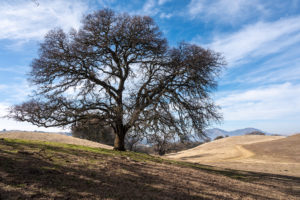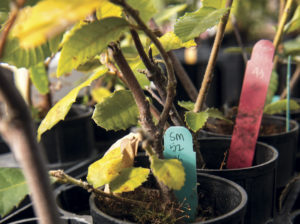Although the disease is popularly known as Sudden Oak Death, the funguslike organism that causes it, Phytophthora ramorum, is also responsible for less severe symptoms in a number of other native and nonnative plants. The continually growing list of affected plants currently stands at 26, ranging from the towering coast redwood to the diminutive western star flower. Many of the plants not killed by this pathogen sustain only twig or leaf damage. However, some species that survive the infection may help transmit the disease to more susceptible plants, such as oaks. In particular, California bay laurel appears to serve as a reservoir for the pathogen, which produces infective spores in great numbers on the leaves of this common tree. In the wet season, rain can wash the spores from bay laurel leaves onto nearby plants and the surrounding soil, from which they can be transported to new areas.
As yet there is no prophylaxis, treatment, or cure for trees infected with the Sudden Oak Death pathogen. However, there are ways we as individuals can help slow its spread and avoid inadvertently transmitting it through our outdoor activities.
When hiking or biking, stay on established trails and respect trail closures.
Do not remove any plant parts (including leaves, branches, twigs, wood, or acorns) or soil from an infested area.
Clean soil and mud off shoes, mountain bikes, vehicles, pets’ paws, and horses’ hooves before leaving an infested area.
Report plants exhibiting symptoms to the office of the County Agriculture Commissioner, the University of California Cooperative Extension, or California Department of Forestry and Fire Protection.
We can also urge government officials to fund Sudden Oak Death research and education programs. And we can educate ourselves further about the disease. The most comprehensive source of information is the website of the California Oak Mortality Task Force at www.suddenoakdeath.org. It includes a list of affected plant species and a pictorial guide to their symptoms, detailed maps of all infested areas in the state, guidelines for home owners and landscape professionals, an extensive list of contacts for information and diagnosis, and monthly reports on new developments.




